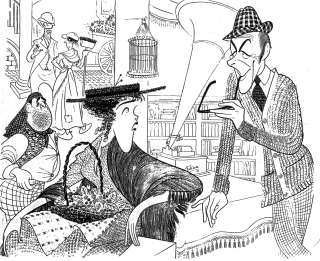
Content Objective: The learner will apply conventions of grammar and language usage; the reader will respond to various literary genres using interpretive and evaluative processes; study the characteristics of literary genres (drama) through reading a variety of literature (play).
Language Objective: Discuss elements of literature after reading/performing a play.
Essential Question: In order to bring the printed word "to life" in the mind of the reader, what can an author (and reader) do?
Rough drafts of the career research paper were collected today. Then, students were given a copy of the play Pygmalion. Before reading we discussed the cockney accent, practiced some pronunciation, heard some samples, and, using the SmartBoard, I gave them some sentences to read aloud. Some examples were from Edgar Rice Burroughs' Tarzan of the Apes. Students were then asked to read the play and answer the 9 reading comprehension questions which followed. Next, some read an article about a contemporary actress now playing the role of Eliza and worked a vocabulary puzzle. We then assigned roles to students and read the play aloud. As almost always, readers theatre was enjoyed by almost all. Now that I think about it, it would have been fun to have a cockney accent contest. Instead of having them read the play alone, we should have just acted out the story first. That would serve my goal of getting them involved on a more personal level. I found a way to get certain students involved who needed to be, yet there are still those being missed. Are more roles needed? Three short plays with each student taking a role? Small collaborative groups have to write a three minute play? That might work.
The accents were fun. Next month, while we study the use of dialect, students can write and perform their own plays in dialect. That will kill two birds with one stone.
Language Objective: Discuss elements of literature after reading/performing a play.
Essential Question: In order to bring the printed word "to life" in the mind of the reader, what can an author (and reader) do?
Rough drafts of the career research paper were collected today. Then, students were given a copy of the play Pygmalion. Before reading we discussed the cockney accent, practiced some pronunciation, heard some samples, and, using the SmartBoard, I gave them some sentences to read aloud. Some examples were from Edgar Rice Burroughs' Tarzan of the Apes. Students were then asked to read the play and answer the 9 reading comprehension questions which followed. Next, some read an article about a contemporary actress now playing the role of Eliza and worked a vocabulary puzzle. We then assigned roles to students and read the play aloud. As almost always, readers theatre was enjoyed by almost all. Now that I think about it, it would have been fun to have a cockney accent contest. Instead of having them read the play alone, we should have just acted out the story first. That would serve my goal of getting them involved on a more personal level. I found a way to get certain students involved who needed to be, yet there are still those being missed. Are more roles needed? Three short plays with each student taking a role? Small collaborative groups have to write a three minute play? That might work.
The accents were fun. Next month, while we study the use of dialect, students can write and perform their own plays in dialect. That will kill two birds with one stone.